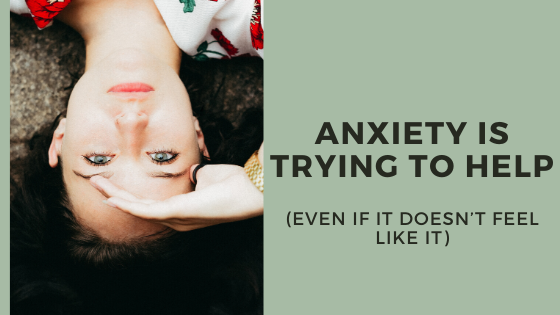Think about how you wash your hands, or look both ways before crossing the street, or stretch before working out. Weirdly, these everyday habits are a form of mild anxiety, which aids you in staying healthy, safe, and at your best. Without at least a little anxiety, we’d be way more susceptible to harm. However, anxiety can go a bit overboard in trying to protect us and interfere negatively in our daily lives.
You probably know the feelings: You’re tense, your heart is racing, you’re thinking of all the things you have to do and the ways they could go wrong, your stomach is cramping, and somehow your face is flushed. You’re feeling anxious. Anxiety happens to everyone. It’s a normal reaction to stress or even experiences we’re excited about. For many, things like test, sports, or even social situations can cause feelings of uneasiness and worry. For some, these symptoms don’t just happen once-in-awhile. It is an everyday occurrence that leaves the brain and the body worn out.
According to the National Institute of Mental Health, approximately 25% of 13-18-year-olds are experiencing an anxiety disorder, and just fewer than 6% are experiencing a severe anxiety disorder. If you’re wondering if this is you, or you’re reading this with your child in mind, take a look at some common symptoms for Generalized Anxiety Disorder below.
How many of these do you experience?
- I feel worried or anxious more often than I feel calmed or relaxed.
- I worry so much that it feels out of control.
- Worry affects my performance at school, activities, and/or my relationships with friends or family.
I feel one or more of the following:
- Restless and on edge
- Irritable and easily annoyed
- Tired and less energetic
- Difficulty concentrating
- Tense muscles
- Stomach pain and/or nausea
- Headaches
- Difficulty falling or staying asleep
If you said yes to four or more on the list, good for you for seeking solutions to help you feel better! These feelings, thoughts, and symptoms don’t have to be your everyday reality. There are many ways you can reduce your symptoms and take control over how you’re feeling. Through mindfulness exercises, therapy, and other changes to your lifestyle (like more sleep!) there are ways to decrease anxious thoughts and feelings and create space for the things you want to focus on.
If you are struggling with anxiety symptoms that interfere with daily life, including school, friendships, and family, it’s important to get an evaluation from a licensed mental health professional. Anxiety is treatable and most adolescents can learn coping skills to help manage their symptoms.
Sources:
Anxiety in Children: Evidence-based Practice Center Systematic Review Protocol. (2016). Agency for Healthcare Research and Quality, 1–24. Retrieved from https://effectivehealthcare.ahrq.gov/products/anxiety-children/research-protocol
Chansard, T., & Tikkou, F. (2019). Conquer anxiety workbook for teens: find peace from worry, panic, fear, and phobias. Emeryville, CA: Althea Press.






